In any historical account of the church of All Saints we begin by acknowledging that it is built on land belonging to the First Peoples of Australia, land over which sovereignty has never been ceded. Our sense of a place made sacred through generations of worship and service does not involve denying or ignoring the effects of colonial settlement on peoples whose bond with country is itself sacred, and is much more ancient. We acknowledge the Wurundjeri people of the Kulin Nation as the traditional custodians of the land on which All Saints stands, and pay our respects to their Elders, past and present. We support the Treaty process and other processes of justice and reconciliation, and pray for a just outcome for Aboriginal and Torres Strait Islander peoples.
164 years of service
Public worship commenced on this site in August 1860 and has continued for 164 years.
Some time before 1860, a group of citizens held a series of meetings in the Peacock Inn Hotel, at the top of what is now called Ruckers Hill. They worked to plan the acquisition of land and the raising of funds and all the other tasks necessary to establish the first local Church of England, as part of the parish of Brunswick, in addition to the already established Christ Church Brunswick. There was at the time only one other church in what is now Northcote.
When services started Victoria had existed as a separate colony from New South Wales for only ten years. (The event of separation gives its name to ‘Separation Street’.) It was only seven years after the first permanent domestic house had been built in Westgarth. There was no gas street lighting in High Street. It would be 15 years before the bridge was built across the Merri, to bring the gas across the creek, and 20 years before the coming of a cable tram. The gradient of Rucker’s Hill had to be completely rebuilt before a tram line became feasible.
It was 28 years before the Northcote Town Hall and Post Office were built, and before the Flinders Street site was even cleared for the construction of St Paul’s Cathedral, a project that lasted decades. By the time Northcote was proclaimed a town, All Saints had already been home to a generation of local worshippers. It became a separate parish, which eventually absorbed the neighbouring parish of Holy Trinity Thornbury. It was later itself absorbed into the parish of South Darebin.
Timeline
1835
Before the arrival of white settlers the banks of the Merri Creek is home to First Nations people, and has been for tens of thousands of years.
1857
With the gold rush of the 1850s there is a huge influx of people and a building boom. In Northcote, a group of local businessmen and community leaders begins meeting regularly at the Peacock Hotel in High Street to plan the founding of a Church of England church in Northcote. They are supported by the Vicar of Christ Church Brunswick.
1859
Land is granted by the government and the foundation stone for a church is laid by the Governor, Sir Henry Barkly. Committee member Mr Bastings proposes that the church be named for ‘All Saints’.
1860
On 26 August the first service is held in the newly-completed west half of the church building, conducted by Bishop Perry.
1863
A timber vestry is added. By 1865 All Saints Northcote becomes a parish in its own right.
1875
Gas street lighting is being installed, brought across the newly built bridge. All Saints is the first building in Northcote to be lit by gas.
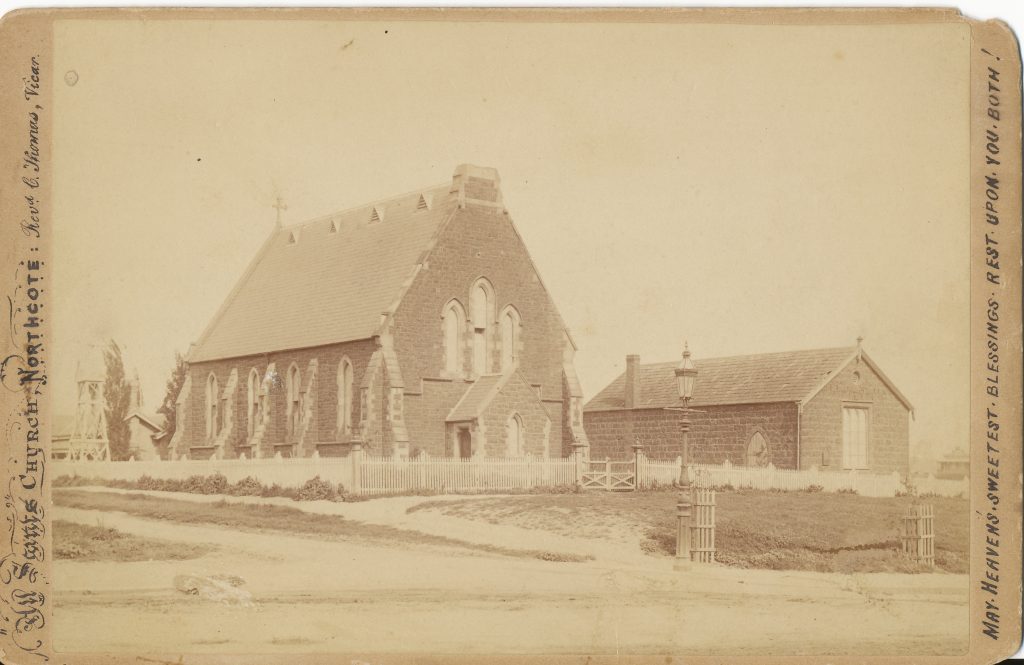
The building on the right was a school built and operated by the church.
1889
In Melbourne, the foundation stone for St Paul’s Cathedral is laid.
1950s
The wooden Chancel burns down and needs to be rebuilt.
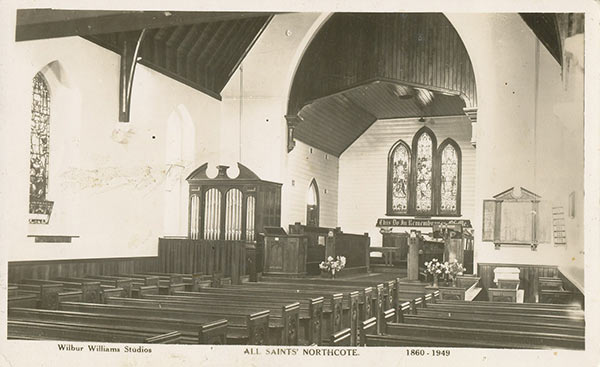

1965
The chancel and vestry rooms are improved with bluestone to replace the wooden structures.
2020
The COVID 19 pandemic reaches Victoria. Services are held with the aid of digital media during periods of lockdown
The church building
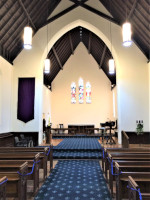

The church building (excluding the vestries and re-built bluestone chancel) is registered by the National Trust with a ‘local’ classification, meaning that it has cultural and historical significance in the context of the region. Citation: ‘The first part of 1859-60 to the design of Nathaniel Billing, although this was never completed…the church is in the Early English Gothic style and distinguished by the use of Bacchus Marsh freestone dressings on a body of squared snecked bluestone rubble.’ It is one of only two churches in Northcote to be registered.
This space has been dedicated, set aside for a Christian purpose since 1860. All through the changes that came with land sales and the gold rush and then the massive social change of the twentieth century, All Saints has remained a focus for worship and community life.
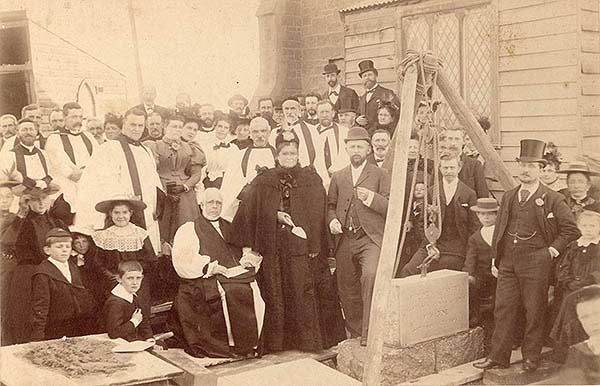


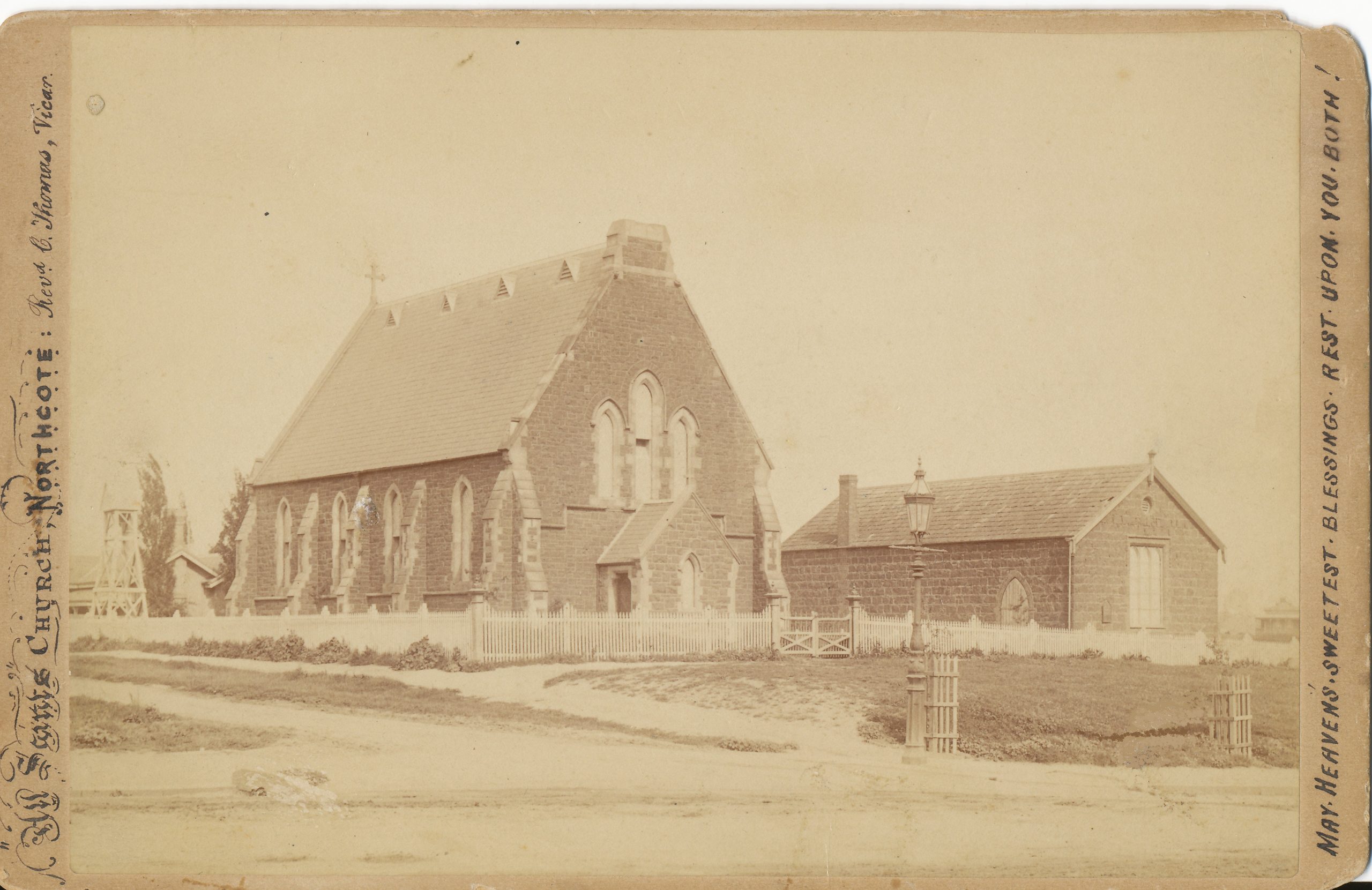
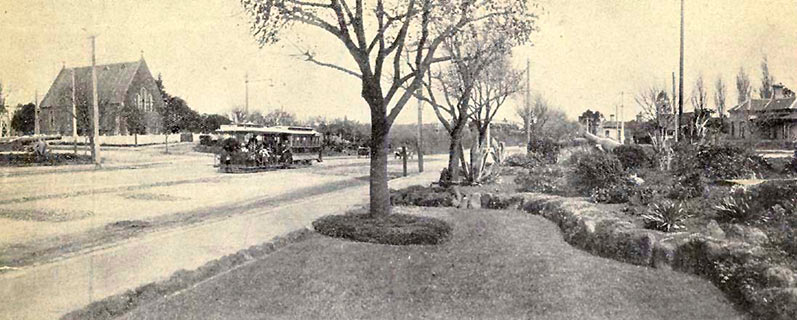 All Saints in about 1910, with beautification of High Street in progress.
All Saints in about 1910, with beautification of High Street in progress.